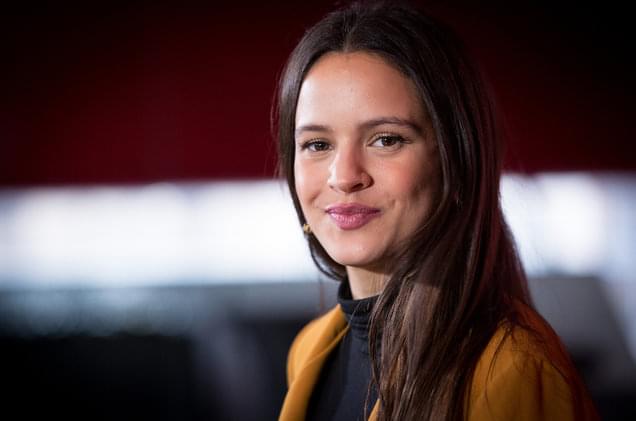The five-time Latin Grammy nominee, whose hotly-anticipated album will be released this week, tells Billboard how she became this fall’s artist to watch.
This Friday (Nov. 2), Rosalía will release her album El Mal Querer on Sony Music Spain. The 26-year-old artist is already a sure bet for a win at the Nov. 15 Latin Grammys, with five nominations for the album’s first single, “Malamente,” including Recording of the Year and Song of the Year.
Also nominated is the video for the song, which has more than 25 million YouTube views and has boosted Rosalía’s budding fame beyond the young Spanish fans who swiftly took to the single to platinum status. Sources at Sony Spain say that she is already at work on music for a subsequent album with big-name producers who are not known for their work in Latin music.
“Her next step is the international mainstream,” says Sony Spain President José María Barbat, who first saw her in rapper C Tangana’s video for the 2016 song “Antes de Morirme,” which she co-wrote with her then-boyfriend. Barbat recalls that he immediately asked, “Who’s that girl?”
Last Friday (Oct. 26), Apple’s Tim Cook uploaded a photo of himself with Rosalía on social media, and over the weekend, Rosalía herself said she “died” when she saw that Lana del Rey was following her on Twitter.
Rosalía has so quickly earned her pop-star status that it might surprise some that El Mal Querer sounds so flamenco. The album, which, Barbat stresses, Rosalía produced independently without label interference, is free of the kind of celebrity artist pairings and facile made-to-be hits that routinely appear on the records of up-and-coming major label artists.
The artist says that El Mal Querer was her graduate thesis for her university studies at Barcelona’s Catalunya College of Music, where she studied flamenco as well as music production. While she calls the album “100 percent inspired by flamenco,” some flamenco purists have blasted her, with one critic commenting “she lacks almost everything” that a singer must have to practice the Spanish art form. Her videos, too have courted controversy.
“She uses our symbols like false eyelashes,” a gypsy activist told a Spanish journalist, adding that she is “using gypsies as something cool to incorporate into her costume, but we aren’t important to her socially.”
Rosalía herself states that she is “making songs that depart from elements of flamenco.” She cringes when the word “trap” is used to describe her music, as it often has been, but is not in a hurry to define her sound. “There are clearly flamenco elements, but at the same time I don’t know what it is,” she tells Billboard. “And I don’t expect a clear answer to that.”
On a hot August day, Rosalía appeared in the bar of a Barcelona hotel in jeans, a striped t-shirt and platform sneakers, her dark brown hair in a braid. The only sign of the streetwise glamour of her videos and recent stage shows were her silver, jewel-encrusted nails. Rosalía talked to Billboard about her new album, growing up and discovering flamenco in a town outside of Barcelona, and how she became this fall’s artist to watch.
You grew up in the same place where you now live with your mother and sister, in Sant Esteve Sesrovires. Do you have flamenco musicians in your family, or were they flamenco fans?
My family didn’t listen to flamenco. In my house, it was The Beatles, Queen, Bob Dylan, a lot of English-language music. I really didn´t have any flamenco input. The closest was with my grandmother. Some weekends when I was with her, she’d be humming Sara Montiel songs, some copla. That was the closest, but it wasn’t flamenco. I was 13 when I heard flamenco for the first time. I remember coming out of my school. We used to go to a park. I used to hang around with people who were older than I was; they had these tricked-out speakers and they would open all the doors of their cars. At that time, you would hear a lot, a lot of flamenco.
There are a lot of people from Andalusia in my neighborhood. I grew up with children of Andalusian immigrants. The area I grew up in, El Baix Llobregat, well it’s kind of like Los Angeles and Mexicans. The culture is there, you can breathe it in all around you. For me flamenco is the most honest and visceral music that exists. That’s why it captured me. Because I realized that you have to since when you sing it, if not it doesn’t sound. You have to implicate yourself in it, if not it doesn’t work. In flamenco, old age is something that’s respected, and I think that’s a really good thing. The best singers are older people. It makes me feel like I have to be constantly learning and that I am going to age learning and making music. And I love that.
One day, I heard Camarón [de la Isla], and for me, that was the moment of before and after. It was a discovery that made a big impact on me.
It surprised me, it was like something totally new and unexpected. It was very visceral and animalistic. It surprised me, but at the same time it felt very familiar. It was like “wow!” There was something that connected with me, I don’t know what it is. And from that moment on, I allowed myself to get close to that music.



